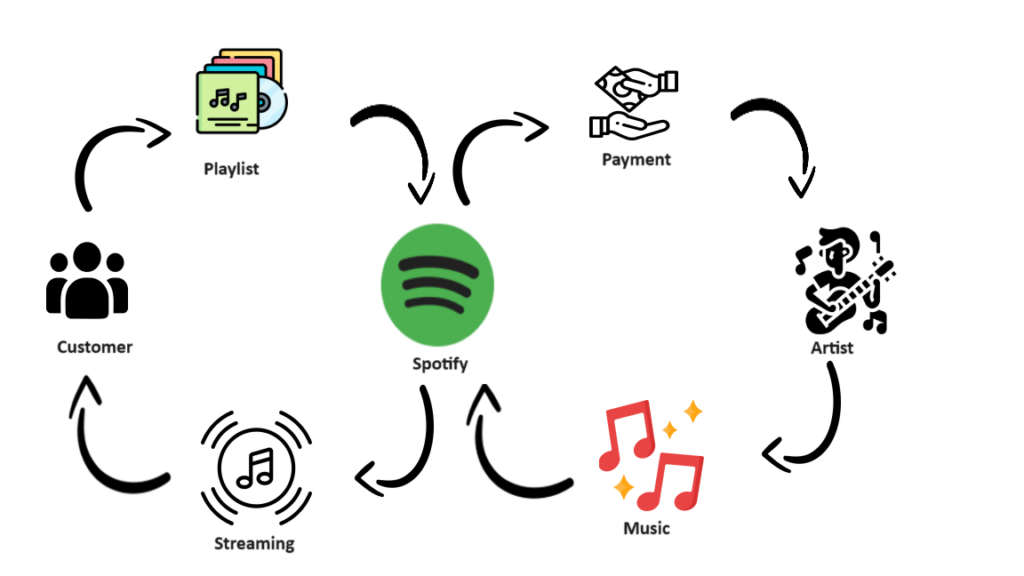
Spotify’s business model is based on a freemium service that offers both free and premium subscription options. The free version enables users to listen to music with ads and provides limited playback control, such as shuffle-only mode on mobile devices. On the other hand, the premium version offers an ad-free experience, offline listening, and full playback control for a monthly fee. The company earns revenue from both subscription fees and advertisements on the free tier.
Spotify is a leading global music streaming service founded in 2006 in Stockholm, Sweden. With its headquarters in Stockholm, Spotify has become a major player in the digital music industry. The platform offers users access to a vast library of music, including millions of songs, albums, and playlists, available for streaming on demand. Over the years, Spotify has expanded its reach worldwide and now operates in numerous countries, serving millions of users globally.
The core of Spotify’s service is its extensive music catalog. Users can access a diverse range of genres, artists, and tracks from around the world. The platform allows for both free and premium subscription models. The free tier includes ads and offers basic functionality, while the premium subscription removes ads, provides offline listening, and delivers higher audio quality. This tiered approach helps Spotify cater to a broad audience, from casual listeners to dedicated music enthusiasts.
Spotify’s algorithm-driven features enhance the user experience significantly. The platform uses sophisticated algorithms to recommend music based on listening history and preferences. Personalized playlists such as “Discover Weekly” and “Release Radar” are generated to help users discover new music tailored to their tastes. Additionally, Spotify provides curated playlists and radio stations, which cater to specific moods, activities, and genres, making it easier for users to find music they enjoy.
Leave a Reply